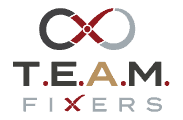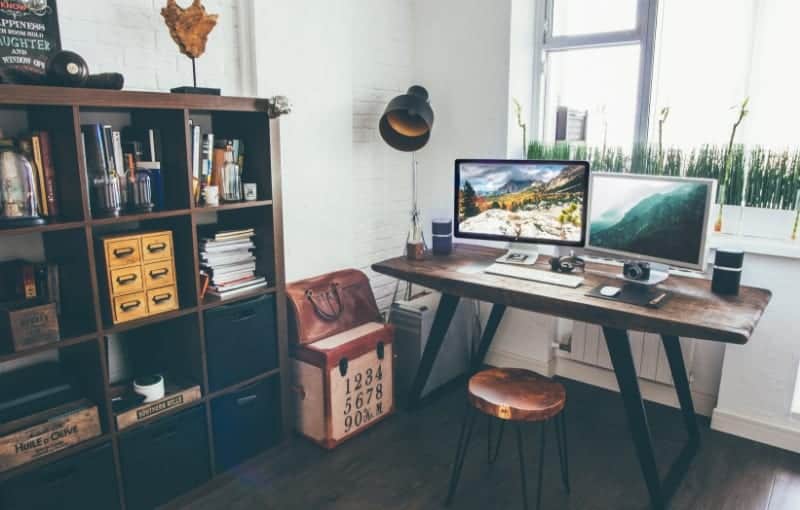As a trainer and consultant, you have the advantage of seeing all kinds of offices in a wide variety of companies. There is something for everyone’s taste and colour: from the completely empty grey table to the counter filled with so much post-it and documents that it is impossible to detect the colour of the furniture.
One thing is certain: the mess on your desk is poisonous to your concentration and consumes a considerable amount of mental energy. In the meantime, it has been scientifically proven that disorder is a source of stress, even for those who defend their clutter as a source of inspiration.
The problem is that while you are trying to focus on an important task, the different objects in your field of vision attract your attention. You are doing “Multitasking” without the intention of doing so.
If you want to make the most of your limited resources, tidying up and maintaining order in your work space is a valuable strategy for the medium and long term. Here are our…
Nine tips to get your desktop in order
Tip 1: Plan time for the “Efficient Office” project
It takes time to transform a large cluttered bazaar into a serene, efficient and productive environment. Write this project on your Masterlist and set a deadline in the near future. If you tidy up “a little here, a little there”, the clear space is reduced and all the more vulnerable to being occupied again in the course of the project. Put the first action(s) on your action list for this week. To avoid having to block a full day (or even more), think about….
Tip 2: Dividing the project into several phases
It may be very interesting to divide your project into three distinct phases:
Putting things in order and gathering the different elements on your desk
Sort/Decide on the destination of the items found: garbage can, archives, Todo list (download the MYT schema here).
Set up a system to keep the order and schedule maintenance (a bit like “an ideal week” for your office)
The advantage of working in several phases is that Sherlock Holmes and Dr. Watson are used in a targeted way. The first part of the work can, for example, be considered for the famous “Friday afternoon after lunch with colleagues”…
Image
Tip 3: Less is more
Be VERY selective with tools that deserve a place on your desktop, such as:
The keyboard, mouse and computer screen;
The telephone;
A notebook and a pencil;
Possibly a lamp.
Analyse on a case-by-case basis whether it is necessary to add: stapler, punch, calculator, stamps, sticky paper, etc. In most cases, these tools are close enough when stored in a nearby drawer.
On this subject: infrared and laser mice do not (with a few exceptions) need a mat.
Tip 4: Get a system for your information
Documentation for your projects can be found in three places in your office:
The physical inbox
It is a gathering box. Ideally, it is located out of your sight, away from your attention (just like your inbox in outlook). This is the place to collect new information and potential todo’s.
Suspended files
The idea is to tilt your paper piles at 90°. It came from the German tidying guru: Werner Tiki Küstenmacher. The unsightly and demotivating pile of paper on your desk ends up in a drawer. This not only clears the view but also your mind, and also allows you to quickly classify and retrieve information about your current projects. For example, it is possible to create a suspended folder by responsibility (grouping together the documents of the related small projects) and by ongoing major project. It is then enough to take out the folder when working on the project in question.
Filing cabinets
Binders are used for medium- and long-term archiving. Therefore, they should not be located in direct proximity to the office. They are also the destination of older documents in the case where a suspended file is filled to more than 3/4 of its capacity.
Tip 5: Scan (part) of your information
It is perfectly possible to put the Tip 4 principle into practice in a digital environment.
Digitized information:
– no longer take up physical space
– are easily found through search systems
– can also be available outside your office
– are easier to transport
– are very flexible in their (re)ranking
Scanning has become very easy thanks to applications such as Microsoft Office Lens or Scanner Pro. Turning physical documents into files is child’s play.
Let’s not forget: it’s always possible to opt for a hybrid system.
You can find more information about scanning information here.
Tip 6: Avoid paper pads
The problem with paper pads is twofold:
– you have a series of information in your field of vision that does not deserve your attention
– they are easily used as a “collection point”, but they are unreliable because they are rarely renewed
Tip 7: Don’t limit yourself to the office itself
It’s not just the junk on your desk that gets your attention. The same applies to posters, cards, photos, diagrams, etc. in the area behind your desk. Also program a sorting in the displayed elements and favour an exposure outside your direct field of vision, such as on the side. The idea is to banish from your field of vision anything that is not directly related to the task you are performing.
Tip 8: Adopt the “Clean Desk” attitude
When you leave your office at the end of the day (or at least on weekends), make sure that there is nothing left on the work surface. Your morale does not then already receive a first blow when you arrive at the office on (Monday) morning.
Tip 9: Brown M&M’s
As with the Master Your ToDo-List system, it is important to have an alert system.
You can find more information on this subject in another article on our blog.
ACTION
Start with tip 1… 😉




